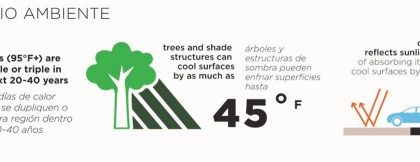About 11 miles east of Atlanta is a small city of about 13,000 people that is becoming known as “the most diverse square mile in America.”
In the 1990s, refugee resettlement programs identified Clarkston, GA as a good fit for displaced individuals of many backgrounds. Since then, the city has received over 40,000 refugees. There are 57 nationalities represented and 52 different languages spoken in Clarkston, and the dominant nationalities and languages are constantly changing based on where displaced individuals are coming from.

In October, Alta was selected to develop a master plan for parks and trails along the south fork of Peachtree Creek in Clarkston.
During the interview, the City Manager asked us, “Why is a big firm like Alta interested in our small city?” The answer was, “Because small cities can make bigger changes.” Smaller cities benefit from fewer bureaucratic barriers to planning and implementation.

With such a compact size, Alta’s team was able to dedicate more time to outreach and to meaningful engagement with residents and community leaders, getting to the core of what improvements should be made.
As the team begins planning for the community charrette, Alta understands the importance of networking with community leaders, building trust, and understanding the true spectrum of ethnic diversity.
Here are some tips Alta has collected over the course of the project, thanks to our partner subconsultant, Alta’s Equity Group, and ongoing community dialogue with City leaders:
- Community members are more likely to listen to someone they already trust. Lean on established leaders in the community and their existing communication channels.
- Use graphic visuals that don’t require any translation or written explanation.
- Word of mouth is often the most effective form of communication. Community service organizations like CDF Action work with individuals in the community with large networks to make calls and send text messages within their community to spread the word about upcoming events. Local organizations compensate individuals for their time with small stipends.
- Roughly one in five households in Clarkston do not own a vehicle, so many residents depend on transit. Use a central, familiar location for the charrette and public meetings that is easily accessible by walking, biking and transit. The proposed greenway should function as a transportation corridor, connecting to adjacent housing complexes, community-serving retail, and other key trip generators.
- Equity is not just about mobility; consider physical and mental health as part of the conversation about community design.
- As one community member told us, “Clarkston is a stroller community.” Public meetings should offer food or kids’ activities to make it easier for parents to attend. Public spaces should accommodate parents with children in tow by designing to ADA standards and infusing early childhood education elements such as play spaces and illustrative signage.
Interested in learning more about Alta’s Health and Equity services? Visit our website, or sign up for our monthly newsletter.
Sources:
https://www.theguardian.com/us-news/2017/may/24/clarkston-georgia-refugee-resettlement-program
www.clarkstoncommunitycenter.org
2016 American Community Survey, 5-year Estimates


